For many people, keeping bugs out of their homes is a constant battle – and to win this war, first, you need to know your enemy.
To help, in this post we talk about some of the most common insect invaders as we discuss tiny black bugs in the house near the window.
Tiny Black Bugs in the House Near the Window
1. Carpet beetles
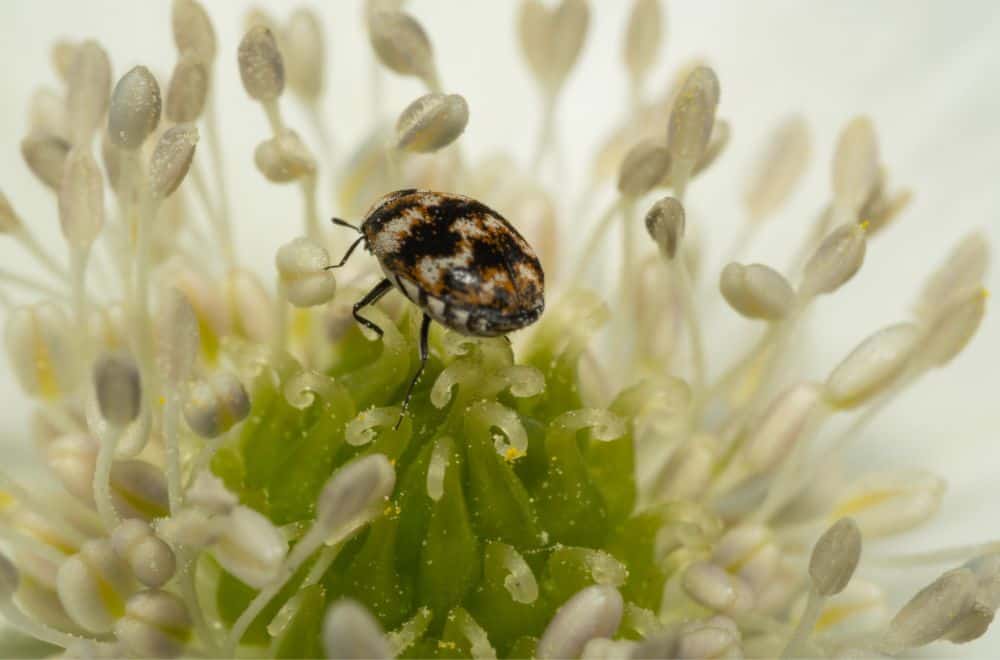
Carpet beetles are around 2-3mm in length (0.08-0.12 inches) in length. You are most likely to see them in spring and summer, often near windows, when they enter houses to lay their eggs.
They take their name from the fact that they eat natural fibers such as leather, silk, wool, feather and cotton – as well as blended fibers found in carpets and rugs. They are partial to certain food items such as nuts and cereals too.
Sometimes, they are mistaken for bed bugs.
Are Carpet beetles dangerous?
Carpet beetles don’t bite or carry diseases, but they can damage anything made of the materials they feed on, and they may also infest your pantry. Their larvae in particular have especially voracious appetites.
Furthermore, in the larval stage, they resemble small black worms covered in bristles that can cause skin irritation.
If you find carpet beetles in your home, a vacuum cleaner will help rid you of this pest.
How to get rid of Carpet beetles (Video)
2. Springtails
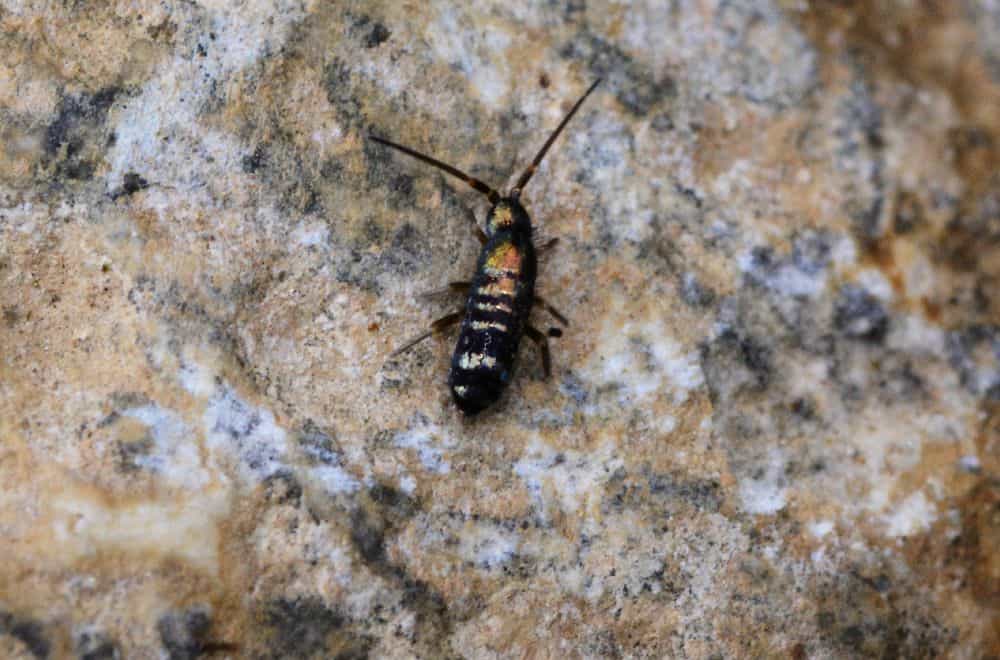
Springtails are usually around 6mm (0.24 in) in length and take their name from the distinctive tail-like appendage called a “furcula” that they use to propel them forward in a jump-like motion. Many species are black, but they can also be white, yellow or even blue.
They eat decaying organic matter and are commonly found in compost piles, damp soil beds, rotting leaves and stacks of firewood. They also enjoy eating fungi and mold.
They are attracted to light, and when the weather becomes too dry, they can attempt to make their way indoors in search of the moisture they need to live, which is why they are often found near windows, especially bathroom or kitchen windows.
Are Springtails dangerous?
These insects don’t bite or carry diseases, so they are not dangerous to humans or pets. However, their presence may attract predators such as spiders, some of which may pose more of a risk to people.
How to get rid of Springtails (Video)
3. Cluster flies
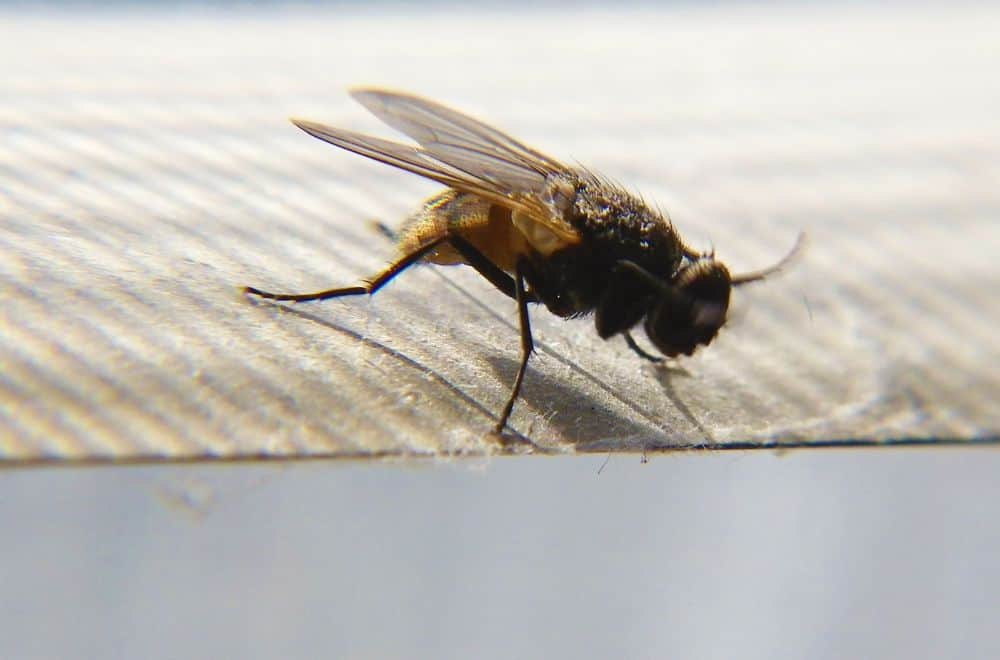
Cluster flies, sometimes known as grass flies or attic flies, are larger than common houseflies and tend to appear in swarms, hence the name. Other than their size and swarming behavior, you can tell them apart from houseflies by the golden hairs on their bodies.
They lay their eggs in the soil during the summer months, and when they hatch, the larvae feed parasitically on earthworms. Later, when they reach the adult phase of their lifecycle, they try to enter houses to escape from the cold of winter.
This is why they are often seen near windows – as well as any other cracks and entry points into your home.
Are Cluster flies dangerous?
Since adult cluster flies feed on fruit rather than excrement or decaying animals, they don’t carry diseases and so aren’t dangerous. However, persistent swarms of them can be extremely annoying.
How to get rid of Cluster flies (Video)
4. Houseflies
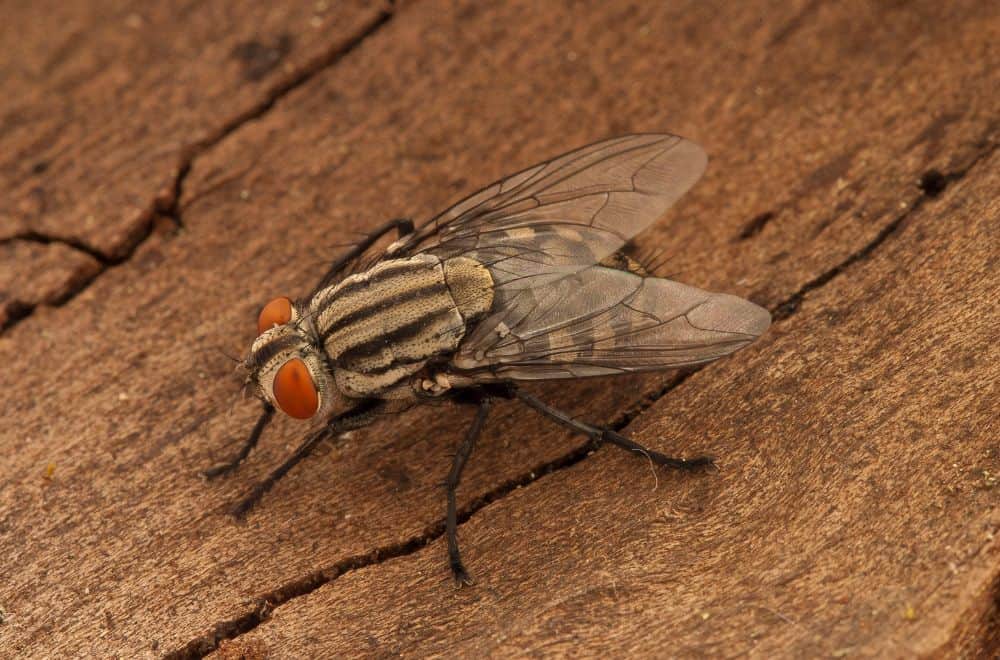
Smaller than cluster flies, this ubiquitous type of black fly is a common unwelcome visitor that just about everyone will be familiar with.
These unhygienic insects lay their eggs in garbage, organic waste, animal feces and the decaying bodies of dead animals. They often enter homes through open windows, especially during summer, and can be seen buzzing around windows as they try to fly back out again.
Are Houseflies dangerous?
Since these flies lay their eggs in all the most unhygienic places, they can pick up germs and bacteria, making them potential vectors for all kinds of diseases.
How to get rid of Houseflies (Video)
5. Fruit flies and other types of flies
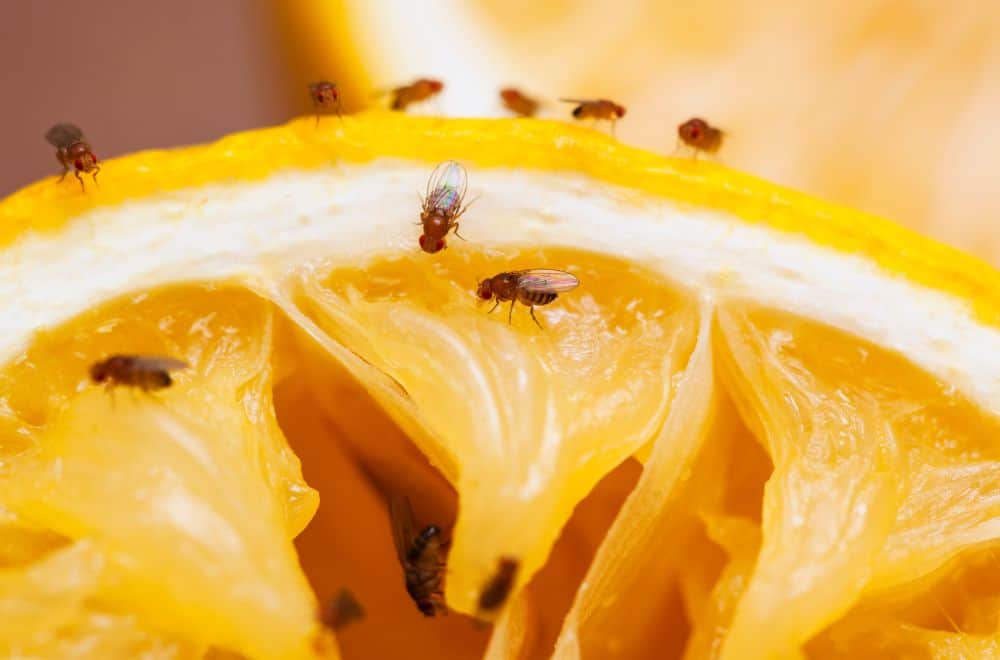
Much smaller than either cluster flies or houseflies, fruit flies are nevertheless another annoying flying bug that can enter our homes and become a nuisance.
As can easily be guessed from their name, they are attracted to fruit, and once they enter our homes and begin to lay large numbers of eggs, they multiply rapidly, quickly causing an infestation.
In general, they prefer overripe or rotting fruit, so you can prevent them from taking up residence in your home by making sure you throw out any old fruit rather than letting it sit around uncovered.
Phorid flies are closely related and similar-looking flies that can be distinguished by their habit of running quickly when threatened rather than flying off.
Drain flies – also known as sewer flies – are another possibility. These annoying pests lay their eggs in blocked sinks or showers.
Are Fruit flies dangerous?
Fruit flies and phorid flies are unwelcome irritations, but they don’t bite humans or carry disease, so they don’t pose any danger to people. Drain flies are unhygienic but aren’t considered particularly dangerous.
How to get rid of Fruit flies (Video)
6. Carpenter ants
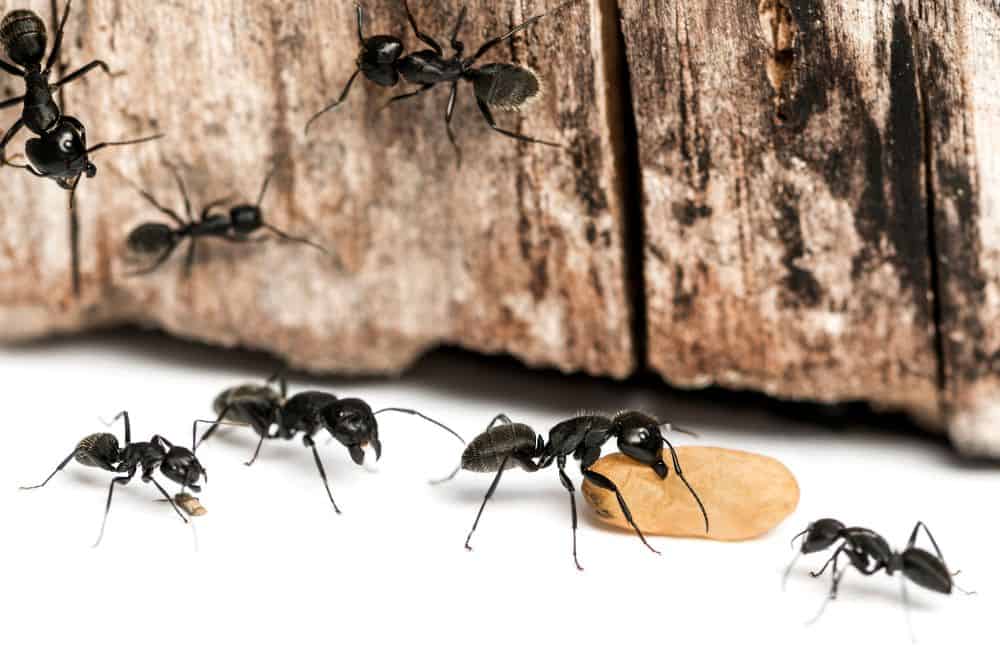
There are many species of carpenter ants. Most are black, but they can also be red and black or yellow and black.
They make their homes in wood structures by digging tunnels into them – they don’t eat the wood but rather eject it out of their tunnels. They can build their nest in both dry and wet wood, but they prefer to inhabit moist wood when possible.
You may spot lines of these insects on windowsills or near windows as they make their way into your house in search of somewhere to start building a new colony.
Are Carpenter ants dangerous?
Carpenter ants are not dangerous to humans – although they can bite when threatened.
More serious, however, is the danger they pose to any wooden elements in your house. If they start burrowing into beams, floorboards or other parts of your home, they can weaken the structure, eventually putting it at risk of collapse.
How to get rid of Carpenter ants (Video)
7. Termites

A similar problem to carpenter ants, termites are also common home invaders, attacking anything made of wood. Some termites have wings, allowing them to fly into your home through open windows.
Particularly concerning is the drywood termite, which, on entering your home, will make its way straight for any parts of your home made from wood, including structural elements such as beams.
Unlike ants, termites eat the wood they infest, and once they find a plentiful food source, they will quickly establish a nest, enabling them to multiply rapidly.
Are Termites dangerous?
Termites don’t pose any risk to humans, but since they eat anything made of wood, they can quickly compromise the structural integrity of your home if they aren’t dealt with quickly.
How to get rid of Termites (Video)
8. Clover mites
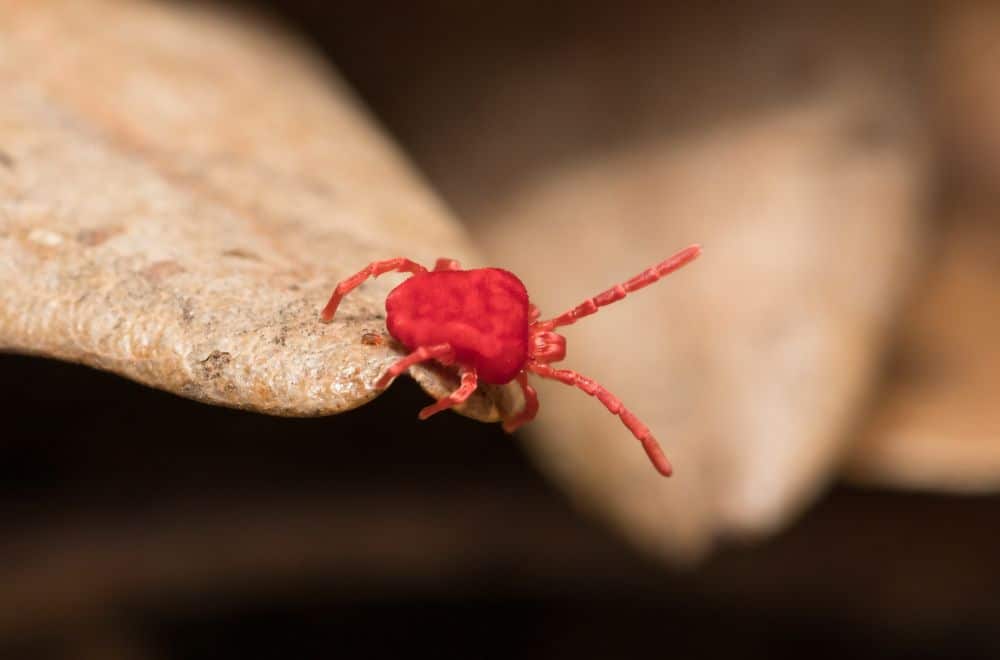
Although not usually black, clover mites are common invaders that you are likely to notice around your windows.
These tiny bugs are around 0.75mm (0.03 inches) long and red in color. They are not insects, belonging instead to the arachnid family, which means they are more closely related to spiders.
Clover mites’ front legs are elongated, which is one way of identifying them – but to the untrained eye, their long front legs can easily be mistaken for antennae.
They feed on plants such as clover and lawn grass and are most active during spring and fall. However, when the temperatures begin to drop at the start of winter, they may make a move for the warmth of your home, which is when you’re most likely to spot them.
Are Clover mites dangerous?
Clover mites are considered a nuisance but aren’t dangerous to humans.
How to get rid of Clover mites (Video)
9. Gnats
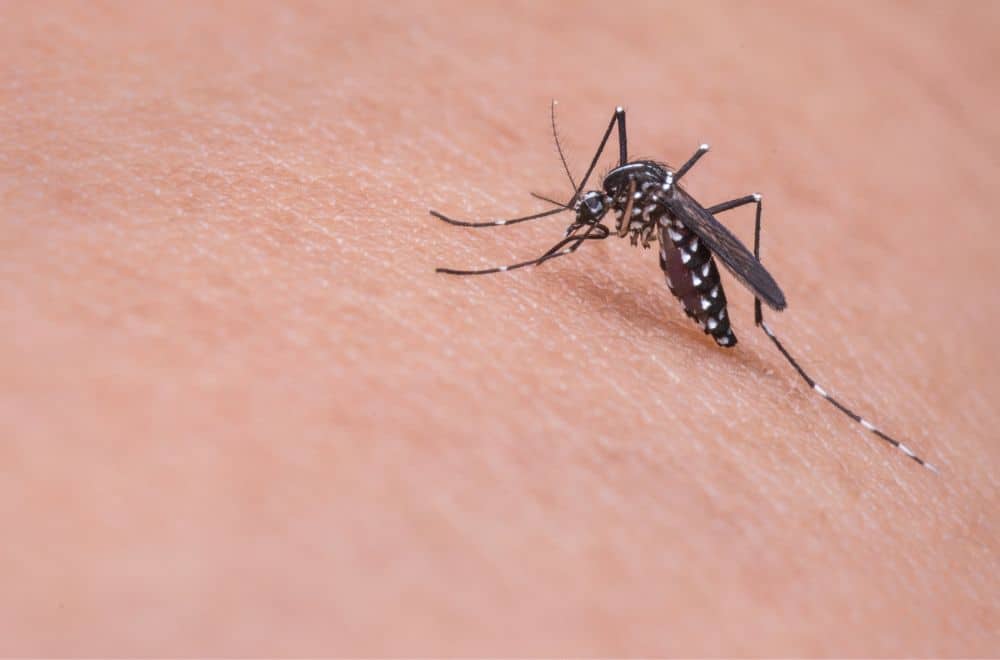
The word “gnat” is used to refer to a large group of tiny flies, and both biting and non-biting species exist. To look at, they resemble small mosquitoes, and they are attracted to light, so they can be found on windows in great numbers at night as they try to get into your house.
Most species lay their eggs in damp soil or decaying organic matter outside. However, if they get into your home, they can lay eggs in clogged drains or in the damp soil of indoor potted plants. Once this occurs, they can multiply rapidly, quickly causing an infestation.
Are Gnats dangerous?
Many gnat species don’t bite and so aren’t dangerous to humans. Even those that do bite are not dangerous – but their bites can still be irritating and unpleasant.
How to get rid of Gnats (Video)
10. Mosquitoes
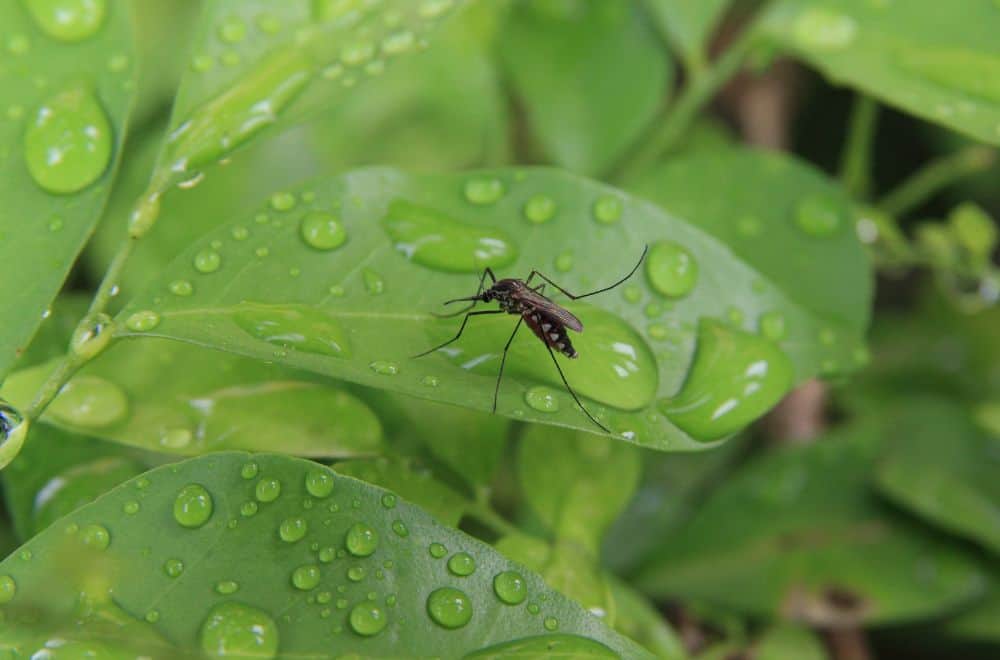
Most people know what mosquitoes look like – and what it’s like to be bitten by one. They lay their eggs in stagnant water and feed on the blood of humans and animals.
They are attracted to our homes since they follow our smell in search of a meal. Once they find a way inside, they hide out until they get the chance to land on us, often while we’re sleeping, to make a meal of our blood.
Since they frequently enter buildings through windows, this is where they are often seen – although once in, they can also be found in any other part of our homes.
Are Mosquitoes dangerous?
In some parts of the world, mosquitoes are vectors for serious diseases such as malaria and dengue. However, these diseases are not present in the US.
This means mosquitoes are not usually considered dangerous – unless they have managed to hitch a ride from a part of the world where these diseases are endemic.
How to get rid of Mosquitoes (Video)
11. Stink bugs
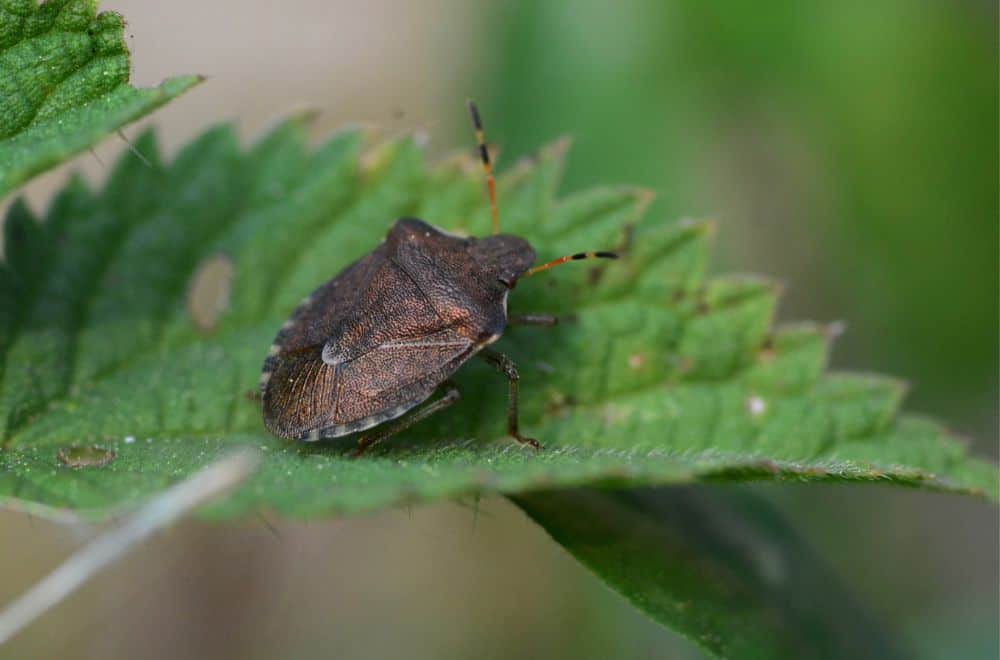
Stink bugs are a group of insects that are grouped together due to their ability to release a foul-smelling spray when threatened. They can be black, but some species may be other colors such as green.
They are attracted to our homes due to the warmth and the availability of food, which is one reason they can often be seen close to windows.
These insects like to eat fruit, so if you have fruit trees near your home, you may be particularly susceptible to a stink bug invasion. This is especially likely in the fall when the outside temperature begins to drop.
Are Stink bugs dangerous?
Stink bugs aren’t considered dangerous, but as you may guess from their name, they can produce a potent and extremely unpleasant smell.
How to get rid of Stink bugs (Video)
12. Boxelder bugs
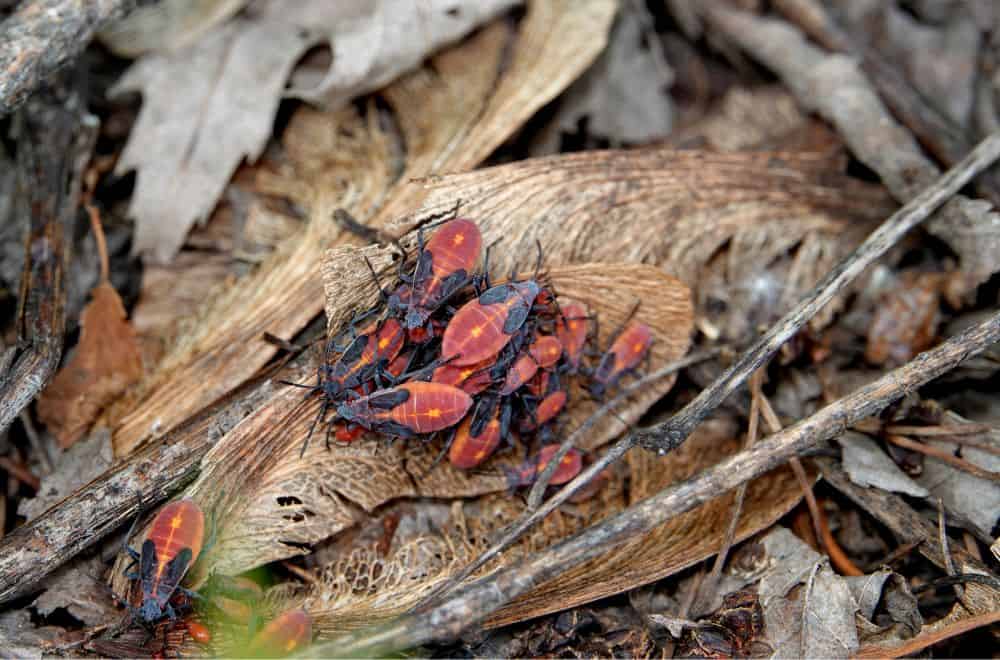
Closely related to stink bugs and similar in appearance, boxelder bugs are another type of insect that can sometimes be spotted near windows.
They are mostly black with red or orange lines on their backs. The adults are usually 6-12mm (0.25-0.5 inches) in length and are most active during spring and summer. However, during fall and winter, they can congregate on windowsills as they try to find a way into your home.
Are Boxelder bugs dangerous?
Boxelder bugs aren’t dangerous, but they let off a stink if you squash them.
How to get rid of Boxelder bugs (Video)
13. Flea beetles
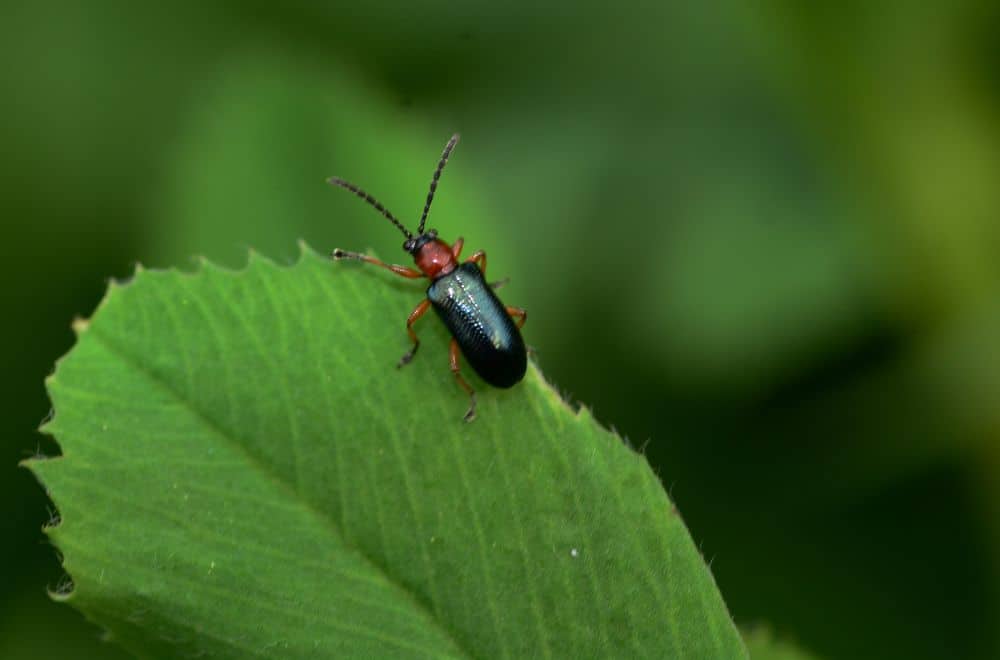
At first glance, flea beetles look similar to fleas – and like fleas, they’re good jumpers, which is how they got their name. However, unlike fleas, they don’t feed on human or animal blood but rather enjoy snacking on plants.
Usually, flea beetles prefer to stay outside when food is plentiful and will happily eat any leaves and plant stems that are available.
However, they can also make their way into your home, attracted by your houseplants and the warmth, which is why they can often be spotted near windows.
Are Flea beetles dangerous?
Flea bugs aren’t dangerous since they don’t bite or carry diseases. Furthermore, they don’t do well indoors, so there is little chance of an infestation occurring, even if they do manage to get into your house.
How to get rid of Flea beetles (Video)
14. Weevils
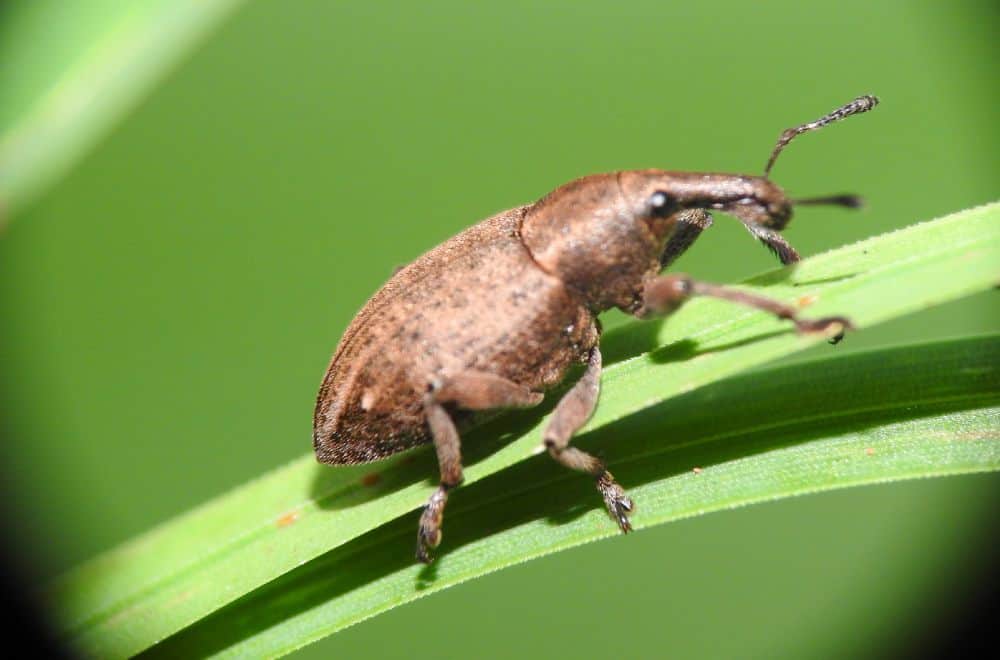
Thousands of species of weevils are known, and they are usually easily identifiable by their elongated snouts. Most species are small, measuring less than 6mm (0.25 inches) – and many are much smaller than this.
Common weevils you may encounter in your home include black weevils and rice weevils. These insects happily make a home in your pantry, laying eggs in foods such as pasta, rice and flour, which the larvae then eat upon hatching.
Many species – including rice weevils – can fly. You may spot them near windows as they attempt to gain access to your home and your food stores. Once an infestation takes hold, you’ll need to throw out all the affected food and give your cupboards a thorough clean.
Are Weevils dangerous?
These insects aren’t dangerous, but they can quickly ruin your food stores, so you’ll want to do everything you can to prevent them from gaining access to your pantry.
How to get rid of Weevils (Video)
15. Silverfish
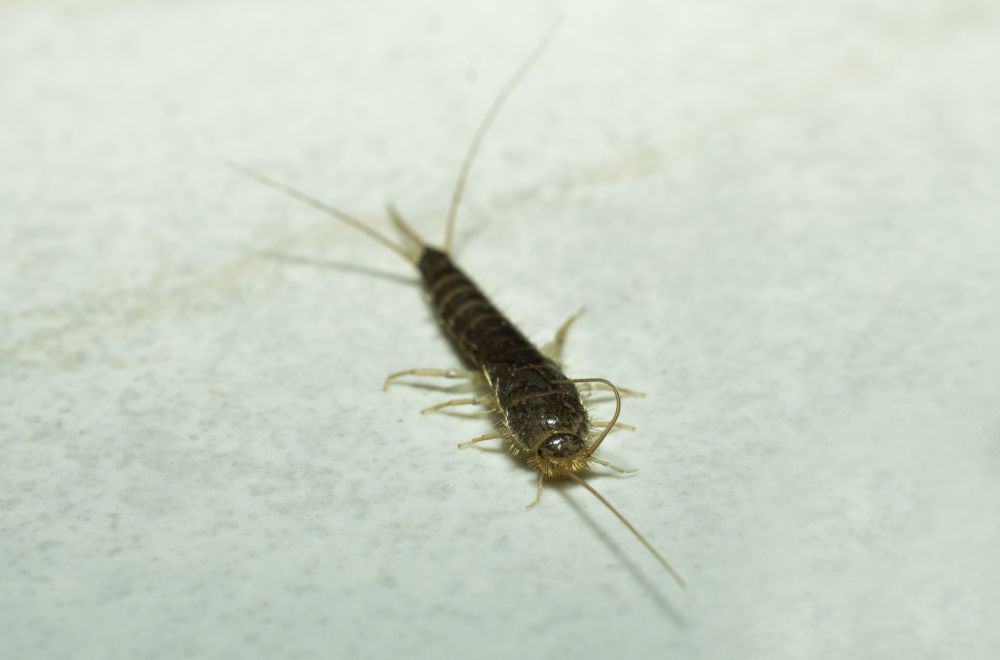
Silverfish are among the oldest known species of insects, and their name derives from their silver-gray color.
Their diet consists of carbohydrates such as sugar or starches, which they can find in many household items, including carpets and rugs, clothing, coffee, hair, dandruff, glue, paper, photos, plaster and sugar.
This means among other things, they are a threat to books, although paper is not their preferred diet if other sources of food are available.
Are Silverfish dangerous?
Some people have reported being bitten by silverfish, but even if these reports are true, their bites are minor and are neither excessively painful nor dangerous.
On the other hand, since silverfish can make a meal of many household items including paper and carpets, their presence is never welcome since they can damage things like books in your home. For this reason, they are considered pests to be exterminated.
How to get rid of Silverfish (Video)
How to prevent bugs from getting into your home
Our homes are attractive places to a whole range of pests, and rather than deal with an infestation, it’s preferable to prevent these bugs from moving into your home in the first place – and there are several pest control measures you can take to stop them.
You can start by blocking up cracks and crevices that give them access to your home – including gaps that let them into your loft or basement. Spraying peppermint oil around your windows is another effective tactic you might wish to employ.
In summer, using mesh screens to keep flying insects out when windows are open is a good idea too.
At night, turn off lights when you don’t need them and consider using a bug zapper. You should use plastic food storage containers to keep food safe.
Other measures such as fixing water leaks and blocked basins or bathtubs as well as cleaning up dirty dishes will also help keep invading bugs at bay.
Prevention is better than cure
As the old maxim goes, prevention is better than cure, so you should do everything you can to keep bugs out of your home. However, if they do manage to cause an infestation, at least with our guide, now you should know which types of bugs might be responsible.
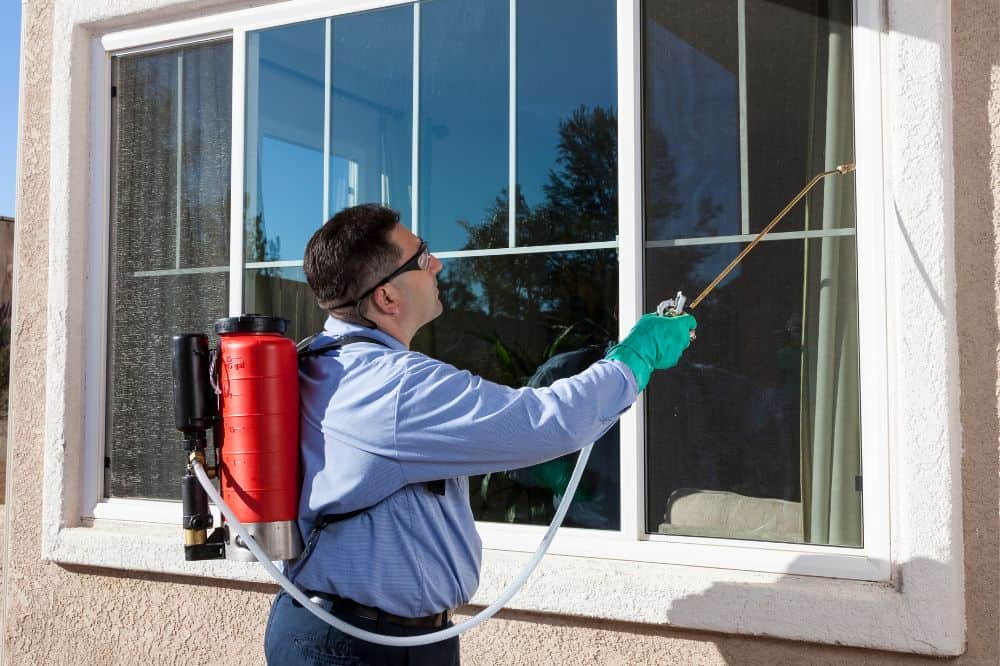
Leave a comment